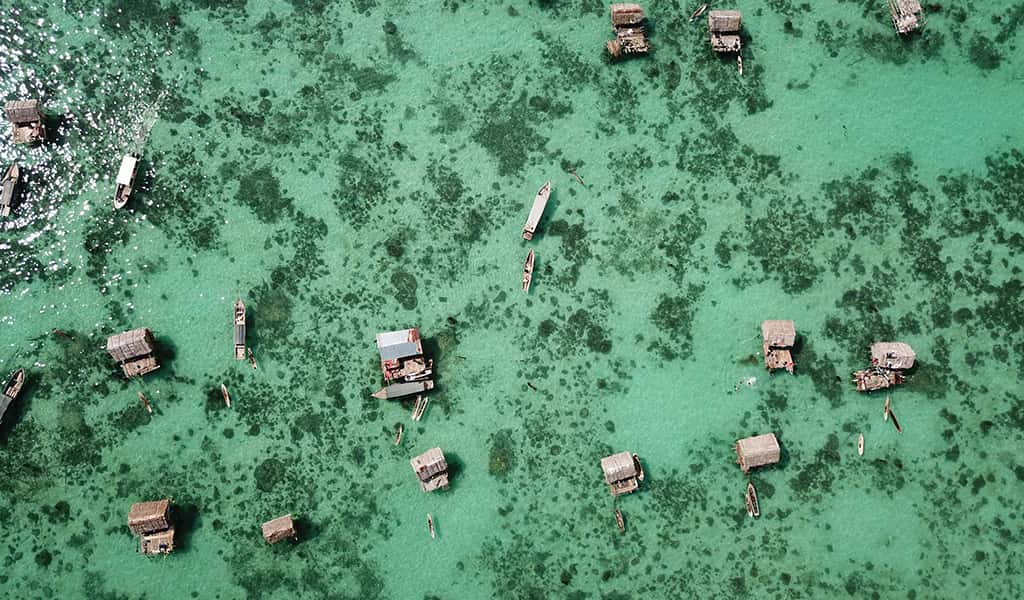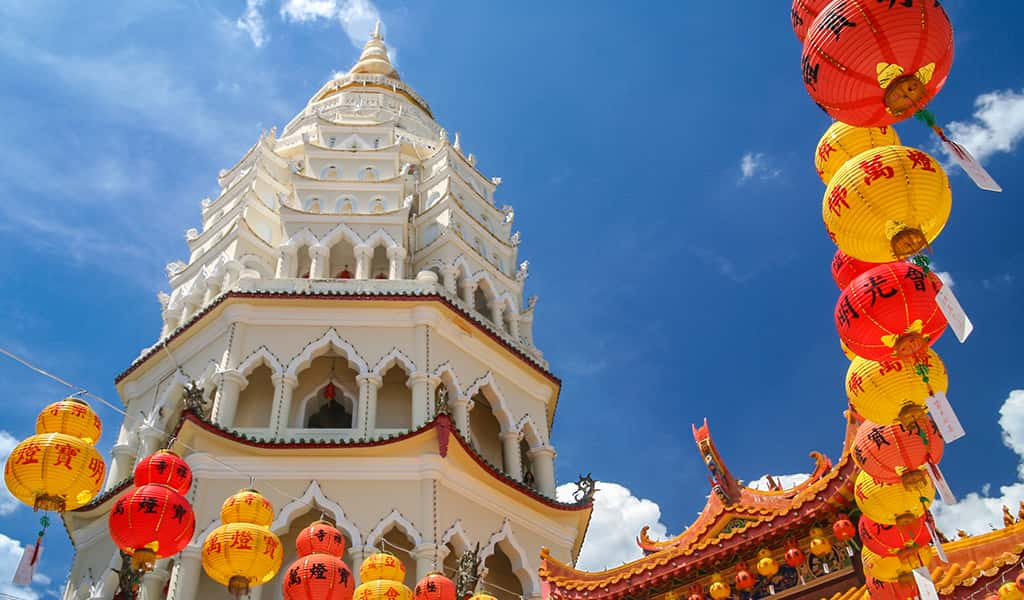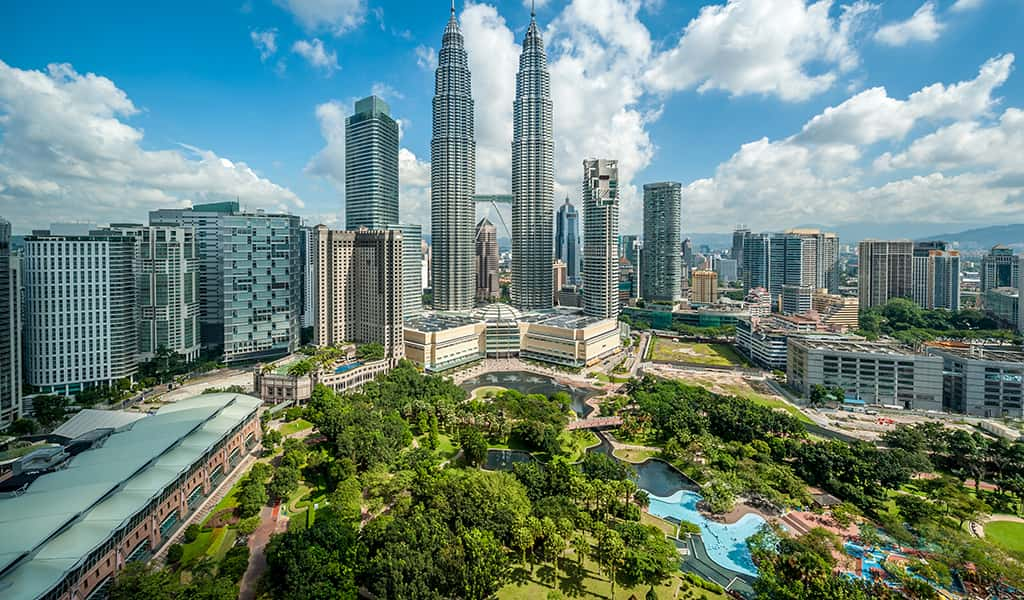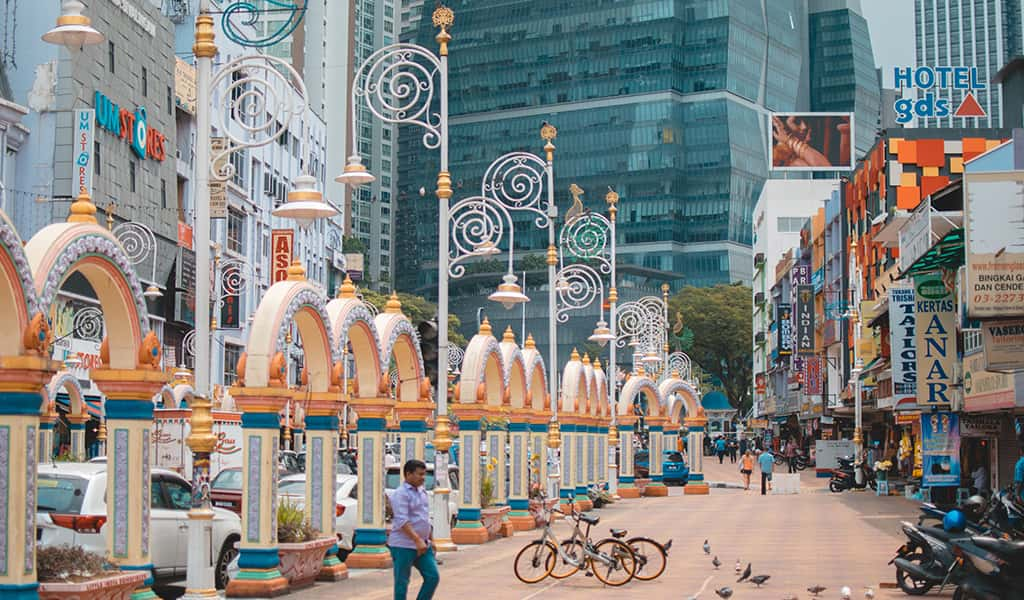Trying Malaysian food, visas and advice on travel
Traveling Malaysia
Looking to jet off to an adventure lover’s paradise, with plenty of foodie destinations, sacred historic sites and villages to discover? You’ll want to put Malaysia on your must-visit list.
From the depths of Gua Mulu Cave on the island of Borneo and the Longhouse Villages to Sabah’s Mount Kinabalu, you’ll never run out of sites to see or immersive new experiences to enjoy.
The southeast Asian country, which is actually two separate, similarly sized regions located in the South China Sea, attracted just under 26 million tourists in 2017. Surrounded by Thailand to the north, Singapore to the South and Indonesia to the west, Malaysia is home to a multi-ethnic, multi-cultural population of 32 million people.
If you’re wondering how much you should save, and what to see and do on this trip of a lifetime, make yourself a bowl of wantan mee and dig in – we’ve put together some tips on our personal experiences visiting this lively, colourful destination.

When to go
Weather will be an important factor when you make the trip. Don’t want to get wet? Avoid the east coast during the monsoon season (which starts in November and lasts through March) as this is where the rain will fall, notes The Broke Backpacker. If you’re up for it, you’ll be rewarded with feasting your eyes on a lush green landscape, gushing waterfalls and thinner crowds at major attractions.
Luckily for you, Malaysia offers a few choices of when to visit depending on what you’d like to see and do. While you’ll get the best weather from March through October, you’ll see a number of festivals – like Thaipusam (one of the most important Tamil festivals in Malaysia), the grand cultural celebration of the Chinese New Year, Rainforest World Music Festival, and Eid, a joyful festival that marks the end of Ramadan – happening in January through February and May through July.
Speaking of Ramadan, if you’re keen to travel during the Islamic holy month (usually around May or June), expect to be warmly welcomed by locals and watch smaller cities and villages come to life at night:
“The holy month also sees Ramadan bazaars (special food markets) pop up in most towns and neighbourhoods every evening, offering an array of traditional Malaysian delicacies you may struggle to find at other times of the year (such as laksa Johor, a family-style laksa rarely sold in restaurants). Hotels, too, often put on elaborate Ramadan buffets during the holy month.” – The Journal, Intrepid Travel
You’ll want to plan for logistical challenges by checking transportation schedules, being aware of which areas may be busy and keeping in mind that business hours often change to accommodate this important religious observance.
Currency and travel costs in Malaysia
Malaysia uses the Ringgit for its currency. Affordability is another reason travellers love visiting Malaysia. According to travel budgeting website Budget Your Trip, you can travel in Malaysia for an average daily price of RM315 ($75). The average price of food for one day is RM71 ($17). One couple can find hotel accommodations for RM339 ($81). Of course, when it comes to knowing how much money to take, hearing about a diverse range of experiences can help. See more budget breakdowns on Phenomenal Globe, Nomadic Matt and Lonely Planet.

Know Malaysian customs
“Malaysia is a very religious country in my experience and it’s important to plan for this when packing clothes,” advised Helen Duffy, who visited Kuala Lumpur and Penang Island’s Georgetown in 2016. “For women, it’s customary to cover your shoulders and (everything down) to your knees.”
Tip: “While you’re exploring local destinations and meeting people around town, follow Malaysian customs. Men greet men with a handshake, while women greet men with a nod. Greet women with a slight bow.” – Traveling Malaysia
Important notes on air travel
The South China Sea divides Malaysia into two distinct masses. Peninsula Malaysia is located between Thailand to the north and Singapore to the South. It’s more populated and offers more transportation offices than East Malaysia, which shares the enormous Borneo island with tiny Brunei and part of Indonesia, according to SmarterTravel.
You might want to follow Claire’s Footsteps’ recommendation to search for AirAsia’s cheapest dates to fly. Booking directly with them may be significantly cheaper than using Skyscanner. (Editor’s note: She lists her travel, accommodation and other costs during her one-week visit to Malaysia in her post – worth checking out.)
Most flights to Malaysia arrive in Kuala Lumpur, which is served by Kuala Lumpur International Airport (KLIA, the city’s main international hub) and Skypark Subang Airport. From KLIA, you can take a taxi (SmarterTravel recommends using the coupon system) light rail or ride the Airport Coach for about an hour. From Subang Airport, your options are a taxi or direct RapidKL bus to KL Sentral.
Malaysia also hosts more than 30 commercial domestic airports.
Tip: Always check passport and visa requirements for the country you plan to visit. If you’re from Canada or the United States,, you must have a passport that’s valid for six months beyond the period of your stay. Tourist visas are not required for stays of up to 90 days. Canadians: Did you know you can travel to 172 countries without a visa. Americans travel to 166 countries without one.

Book shared accommodation and explore the street food scene
You’ll find a variety of accommodation options in Malaysia, from dorms to brand-name hotels, Airbnbs and more. As Nomadic Matt notes in his Malaysia Travel Guide, you can stay in a dorm for $25 to $50 MYR per night, depending on whether you’re staying in a large city. Airbnbs are spread across the country. Shared accommodation starts for an affordable 50 MYR per night. If you prefer privacy, you can have an entire home or apartment to yourself for 250 MYR per night. .
Staying on the island of Penang? Travel blogger Ashley Abroad recommends Roomates Penang, which bills itself as the “coziest guesthouse in Penang” for its “central location, glacial AC, historic Chinese shophouse facade and reasonable price.”
After a good night’s sleep, it’s time to explore the island. Adventurous travel bloggers On the Way to TV recommend taking in Georgetown’s famous street art, the bustling shopping district and gorgeous architectural landmarks including Fort Cornwallis City Hall and Penang State Museum. For food, swing by Kapitan, a restaurant in Little India where you can indulge your taste buds with a delectable feast.
Penang is known as one of the world’s best gastronomic destinations. Matador Network suggests hunting down a delicious meal of Char Koey Teow before renting a bike to see the some of the area’s famous murals.
Helen found Kuala Lumpur to be a “vibrant, exciting city with an amazing food culture,” adding the food she found on her street food tour was “affordable and delicious.”
Malaysia is the perfect spot to discover a new international culinary favorite. Its capital city Kuala Lumpur hosts five hot spots, including Jalan Alor – a perfect place to start your foray into the country’s authentic street-food scene, and Hutong Lot 10, described by The Culture Trip as “a maze of food wonders featuring some of the country’s beloved heritage dishes”, from Ho Weng Kee’s wantan mee to Soong Kee’s beef noodles.

Discover Malaysian culture via public transport, train or taxi
Next, you’ll probably want to see some of Malaysia’s most popular attractions. Look to Jalan Lembah Perdana in Kuala Lumpur, where you’ll find something to fascinate you whether you’re passionate about spirituality, history, law and order or nature. The Islamic Arts Museum, National Mosque, KL Butterfly Park, Orchid Hibiscus Gardens, Royal Malaysian Police Museum, National Planetarium and more are all within a short distance of one another.
To get there, the Islamic Arts Museum advises taking advantage of Kuala Lumpur’s mass public transit system by opting for the RapidKL bus (B101 and B112) and get off at the Dayabumi Complex. From the complex, walk toward the National Mosque. You can also grab a convenient taxi, Uber, or use the popular Grab app.

An adventure lover’s paradise
Adventurous souls will find their paradise in Malaysia. Whether you relish the opportunity to discover mountainous peaks, explore the depths of mysterious caves or even try some BASE jumping, you’ll have endless chances to indulge your craving for an adrenaline rush.
Matador Network suggests hiking to the top of Mount Kinabalu (the tallest peak in Borneo’s Crocker Range), exploring Gua Mulu Cave (a UNESCO World Heritage Site situated in Gunung Mulu National Park), and checking out KL Tower International Jump Malaysia, a four-day base jumping event that welcomes about 100 base jumpers from more than 20 countries to Kuala Lumpur Tower annually in September or October. These are just a few of the 16 Malaysian travel experiences Matador Network recommends taking before you die.
Malaysia’s diverse food culture, lively attractions, welcoming atmosphere and deep connection to Asian history and spirituality will make your trip an unforgettable one, even if you’re traveling on a budget.
Don’t forget to tell us about your experience! Have you ever traveled to Malaysia, or are you planning to book a trip? What are your best tips when it comes to saving for vacations? We’d love to hear what you’ve planned, or any tips we’ve missed. Share your story in the comments and tell us what destinations are on your wish list. Our team love saving for holidays and we hope to inspire our members with exciting suggestions to spend your Caddle money.

Learn more about traveling in Malaysia
KL Layover Guide: Essential Info, plus 9 alternative things to do on a layover in Kuala Lumpur, Malaysia – Wander-Lush
Malaysia Travel Tips – Adventure in You
Travel Tips for Malaysia – Geographia
Survival Guide: Top 10 tips for travelling to Malaysia – Culture Trip
15 fun facts about Malaysia that will get you all excited – ExpatGo
Staying at a Longhouse in Borneo, Malaysia – Experiencing Indigenous Sarawak – Borders of Adventure
